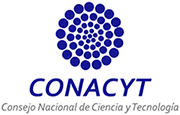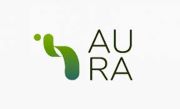Universal accessibility through design experience and participation in Tangamanga I Park, San Luis Potosí, Mexico
DOI:
https://doi.org/10.20983/decumanus.2025.1.5Keywords:
universal design, inclusion in green spaces, participatory methodologiesAbstract
Since 1970 significant progress has been made on the inclusion of people with disabilities (PWD) in public spaces, allowing them to lead an integrated life within the community and close to nature. Global environmental and social regulatory frameworks have adopted universal design as a foundation. While Mexican regulations also embrace it, barriers in the built and natural environments continue to challenge PWD’s equal access to public spaces. The main goal of this study is to identify and understand, through participatory design methods, the access levels to nature that the Tangamanga I Park offers to everyone, but specially to PWD. This article presents the research results and the participatory process evaluation undertaken in collaboration with a PWD organization and design students and academics. Within the collaboration, a workshop was held where individuals with diverse abilities identified inclusion challenges in Tangamanga I Park. Findings show that the park, located in San Luis Potosí and Mexico’s second-largest, presents multiple accessibility barriers for people with disabilities, particularly related to signage, infrastructure, and services. Visually impaired individuals expressed that the park is not prepared for them, and mothers of children with intellectual disabilities reported discrimination. This study highlights the importance of including PWD’s in enjoying green spaces, teaching inclusion in design fields, and valuing participatory processes to foster knowledge exchange.
Downloads
References
Alva Fuentes, B. y Martínez Torres, Y. (2018). Crecimiento urbano y su impacto en el paisaje natural: el caso del área metropolitana de San Luis Potosí, México. Realidad, datos y espacio. Revista Internacional de Estadística y Geografía, 9(2), 66-77. http://internet.contenidos.inegi.org.mx/contenidos/sitios/rdebeta/rde_26/RDE25_art06.pdf
Americans with Disabilities Act (UDA). (1990). 42 U.S.C. § 12101 et seq. https://www.ada.gov/law-and-regs/ada/
Aránguez Sánchez, T. (2022). Objeciones a la Teoría CRIP. Revista Española de Discapacidad (Redis), 10(1), 131-145. www.cedid.es/redis/index.php/redis/article/view/831
Bossen, C., Dindler C. e Iversen Ole, S. (2016). Evaluation in Participatory Design: A Literature Survey. Memorias de la 14.a Conferencia en Diseño participativo: Extensos, 1, 151-160. https://doi.org/10.1145/2940299.2940303
Cambiaghi, S. (2019). Desenho universal: métodos e técnicas para arquitetos e urbanistas. Editora Senac São Paulo.
CAST. (2018). Universal Design for Learning Guidelines version 2.2. https://udlguidelines.cast.org/
Chapultepec. (2024). Chapultepec, naturaleza y cultura. https://chapultepec.cultura.gob.mx/
Conferencia de las Naciones Unidas sobre el Medio Ambiente Humano (CNUMAH). (1972). Declaración de Estocolmo sobre el Medio Ambiente Humano. https://www.ordenjuridico.gob.mx/TratInt/Derechos%20Humanos/INST%2005.pdf
Corghi, F. N. y Costa, D. C. (2015). A Dynamic Planner as a Sustainable Planning Way. Journal of Civil Engineering and Architecture, 9, 615-625. David Publishing. https://www.davidpublisher.com/Article/index?id=8768.html
Departament for International Development (DFID). (2002). Tools for Development: A Handbook for Those Engaged in Development Activity. https://www.academia.edu/36485965/Tools_for_Development_Version_15_Tools_for_Development_A_handbook_for_those_engaged_in_development_activity
Design para Todos. (2024). Evento “Naturaleza para tod@s”. Documental UASLP. [Video]. YouTube. https://www.youtube.com/watch?v=UK8d7Eq9Uj4
DIS-CAPACIDAD. (2021). Censo 2020: 16.5 % de la población en México son personas con discapacidad. https://dis-capacidad.com/2021/01/30/censo-2020-16-5-de-la-poblacion-en-mexico-son-personas-con-discapacidad/
El Heraldo de San Luis Potosí. (2024). Presentan dos rutas más de MetroRed. https://elheraldoslp.com.mx/new/2024/04/04/presentan-dos-nuevas-rutas-metrored/
Gerrard, V. y Sosa, R. (2014). Examining Participation. En PDC ’14: Proceedings of the 13th Participatory Design Conference (pp. 111-120). ACM. https://doi.org/10.1145/2661435.2661451
Grupo de Linguagem não verbal, Ação territorial e Design Universal (GLAD). (2016). Grupo del Directorio de los Grupos de Investigación de Brasil. CNPQ. http://dgp.cnpq.br/dgp/espelhogrupo/9435706573967492
Hernández-Bonilla, M. y Rubio-Gutiérrez, H. (2024). Espacio público e interseccionalidad en la docencia del diseño urbano. Legado de Arquitectura y Diseño, 19(35), 29-46. https://doi.org/10.36677/legado.v19i35.20730
Hernández-Galán, J., De la Fuente Robles, Y. M. y Campo Blanco, M. (2014). La accesibilidad universal y el diseño para todas las personas: factor clave para la inclusión social desde el design thinking curricular. Educación Social: Revista de Intervención Socioeducativa, 58, 119-134. https://dialnet.unirioja.es/servlet/articulo?codigo=7056853
Instituto Nacional de Estadística y Geografía (INEGI). (2020). Discapacidad. Science 2020. https://gaia.inegi.org.mx/scince2020/
Instituto Nacional de Estadística y Geografía (INEGI). (2021). Estadísticas a propósito del Día Internacional de las Personas con Discapacidad. https://www.inegi.org.mx/contenidos/saladeprensa/aproposito/2021/EAP_PersDiscap21.pdf
López Mares, L. M., Aranda, M. U. y Gámez Juárez, J. I. (2020). Diseño participativo, aprendizaje y servicio con niñas, niños y personal del Instituto Estatal de Ciegos. En M. E. Molina Ayala y O. L. Narváez Montoya (Coords.), Diseño interdisciplinar: experiencias académicas (pp. 125-150). UASLP. https://libros.uaa.mx/index.php/uaa/catalog/view/93/70/453
Organización de las Naciones Unidas (ONU). (2006). Convención sobre los derechos de las personas con discapacidad. https://www.ohchr.org/es/instruments-mechanisms/instruments/convention-rights-persons-disabilities
Organización de las Naciones Unidas (ONU). (2015). Objetivos de Desarrollo Sostenible. https://www.un.org/sustainabledevelopment/es/objetivos-de-desarrollo-sostenible/
Organización de las Naciones Unidas para la Educación, la Ciencia y la Cultura (UNESCO). (2013). Replantear la educación en un mundo en mutación. https://unesdoc.unesco.org/ark:/48223/pf0000232555
Pérez Barragán, M. Y. (2022). Competencias profesionales fundamentales para el diseño de espacios accesibles e incluyentes. Cuadernos del Centro de Estudios en Diseño y Comunicación, 151, 183-200. ISSN: 1668-0227.
Pérez Barragán, M. Y. y Delgadillo Silva, A. M. (2022). Participación de un grupo interdisciplinar en el Plan Maestro. Proyecto Tangamanga, S. L. P. En M. E. Molina Ayala (Coord.), El taller interdisciplinar en el hábitat (pp. 116-129). UASLP.
Pruett, S. (2017). Exclusive Interview with the Late Ron Mace, Father of Universal Design. https://stories.universaldesign.org/exclusive-interview-with-the-late-ron-mace-father-of-universal-design-7527ba104cba
Rocha Gallardo, L. F., Carrión González, M., Ángel Abraham, J. y Limón Noblecía, M. (2024). Naturaleza para todos: un taller donde las discapacidades no son límite. Facultad del Hábitat, UASLP. https://heyzine.com/flip-book/c1011079f1.html#page/1
San Luis Potosí (Estado). (2022). Movilidad incluyente. https://slp.gob.mx/SCT/Paginas/Movilidad-Incluyente-.aspx
San Luis Potosí (Estado). (2024). Portal de Transparencia. Respuesta solicitud de información (CECURT/DG/UT/0198/2024).
Sánchez, S. y Díez, E. (2013). La educación inclusiva desde el currículum: el diseño universal para el aprendizaje. En H. Rodríguez y L. Torrego (Coords.), Educación inclusiva, equidad y derecho a la diferencia. Wolters Kluwer.
Sassaki, I. (2010). 7 dimensões da arquitetura inclusiva. Editora Senac São Paulo.
Secretaría de Desarrollo Agrario, Territorial y Urbano (SEDATU). (2020). PROY-NOM-001-SEDATU-2020, Espacios públicos en los asentamientos humanos. Diario Oficial de la Federación. https://dof.gob.mx/nota_detalle.php?codigo=5643417&fecha=22/02/2022#gsc.tab=0
Solano Meneses, E. E. (2022). Accesibilidad y Teoría CRIP: la redención del espacio. Limaq: Revista de Arquitectura de la Universidad de Lima, 10, 85-106. https://dialnet.unirioja.es/servlet/articulo?codigo=9606919
Trujillo, L. A. y Carreón Uribe, O. J. (2021). Recreación inclusiva: un modelo de recreación para PCD basado en capacidades. https://books.google.com.mx/books/about/Recreaci%C3%B3n_Inclusiva.html?id=cEE3EAAAQBAJ&redir_esc=y
UDI. (2024). The RLMACE Universal Design Institute. https://www.udinstitute.org/
Downloads
Published
How to Cite
Issue
Section
License
Copyright (c) 2025 Decumanus

This work is licensed under a Creative Commons Attribution-NonCommercial-ShareAlike 4.0 International License.











